Hydrangea macrophylla Sunlight Preferences: What You Need to Know
Hydrangea macrophylla, or bigleaf hydrangea, prefers partial shade or dappled light rather than direct sun. It can tolerate morning sunlight, but it’s essential to provide shade during the hottest part of the day to prevent wilting and leaf scorching.
These plants generally thrive in well-drained, consistently moist soil with a slightly acidic pH. Although they can survive in sunnier conditions, too much sunlight can affect their health and the vibrancy of their large, colorful blooms, so providing the right balance of light and shade is vital for optimal growth.
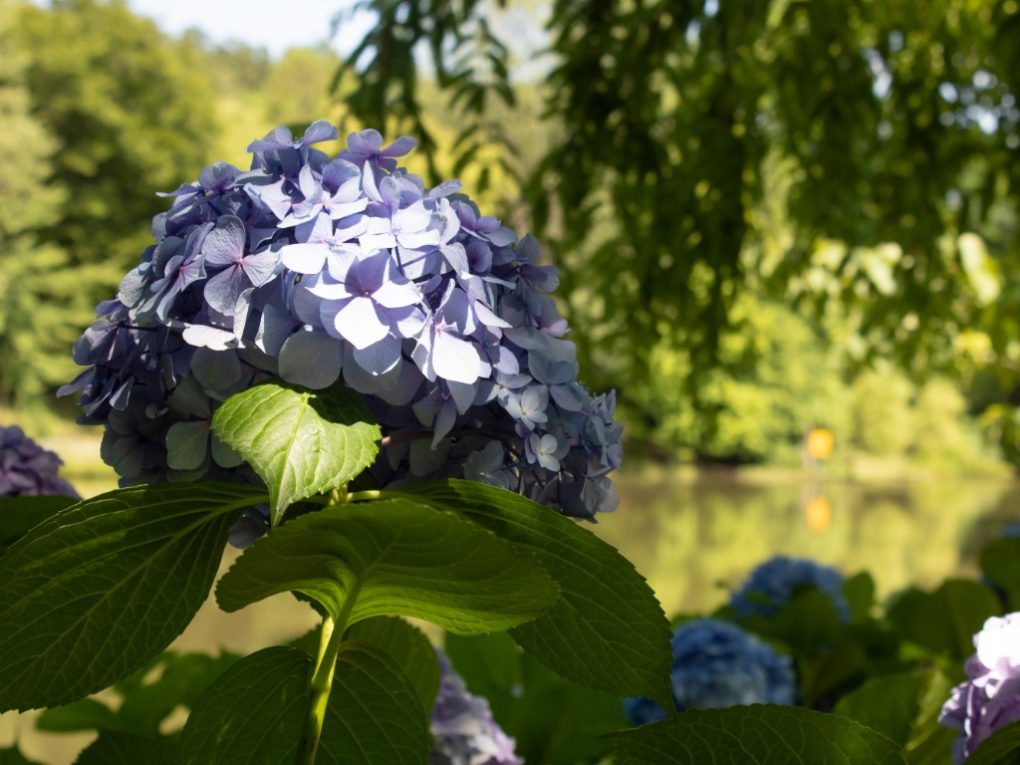
Table of Contents
Light Requirements
Hydrangea macrophylla, or bigleaf hydrangea, is a popular ornamental plant that produces large, colorful blooms. Proper lighting is crucial to the growth and development of this plant. Here are some factors to consider when it comes to the light requirements of Hydrangea macrophylla:
Ideal Light Conditions
Bigleaf hydrangeas thrive in partial shade, meaning they need between 3-6 hours of direct sunlight daily. Morning sunlight is preferred, as it is less intense and less likely to damage the plant. In hotter climates, afternoon shade is recommended to protect plants from excessive heat.
Hydrangeas can also grow well in full shade, which may result in fewer blooms and weaker stems. However, if you plant your hydrangeas in a shaded area, ensure they still receive some indirect light throughout the day.
Effects of Too Much Sunlight
Hydrangeas are sensitive to direct sunlight, especially during the hottest parts of the day. The leaves and flowers can wilt and burn if exposed to too much sun, and the plant may produce fewer blooms.
In addition, too much sunlight can lead to soil drying out quickly, causing root damage and stunted growth. To prevent this, make sure to water your hydrangeas regularly and provide them with some shade during the hottest parts of the day.
Effects of Too Little Sunlight
Hydrangeas may produce fewer blooms and weaker stems if they do not receive enough sunlight. In addition, the plant may become more susceptible to pests and diseases.
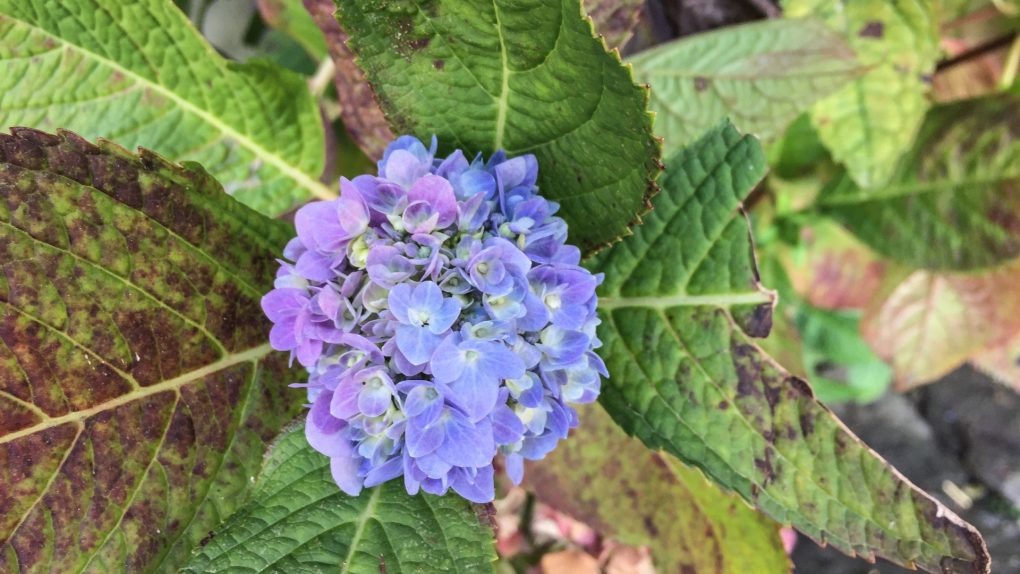
To ensure that your hydrangeas receive enough light, plant them in a location that receives at least 3-6 hours of direct sunlight daily. If you are planting them in a shaded area, ensure they still receive indirect light throughout the day.
Soil Requirements
Hydrangea macrophylla, commonly known as bigleaf hydrangea, has specific soil requirements to grow and thrive. Below are some of the ideal soil conditions for Hydrangea macrophylla:
Ideal Soil Conditions
● The soil pH should be slightly acidic, between 5.2 and 6.2.
● The soil should be well-drained and moist, but not waterlogged.
● Hydrangea macrophylla prefers rich soil that is high in organic matter.
● The soil should be able to retain moisture, but not be too wet, as this can cause root rot.
It is important to note that the ideal soil requirements may vary depending on the specific cultivar of Hydrangea macrophylla. Therefore, it is always best to check the plant’s tag or consult with a gardening expert for specific soil requirements for your plant.
Effects of Poor Soil Quality
If the soil quality is poor, it can harm the growth and health of Hydrangea macrophylla. Below are some of the effects of poor soil quality:
● If the soil pH is too high, plants may not be able to absorb certain nutrients, resulting in stunted growth and yellow leaves.
● If the soil is too compacted, it can prevent water and air from reaching the roots, leading to root rot and other diseases.
● If the soil is too dry, the plant may not be able to absorb enough water, leading to wilting and leaf drop.
Maintaining the ideal soil conditions is important to ensure the optimal growth and health of Hydrangea macrophylla.
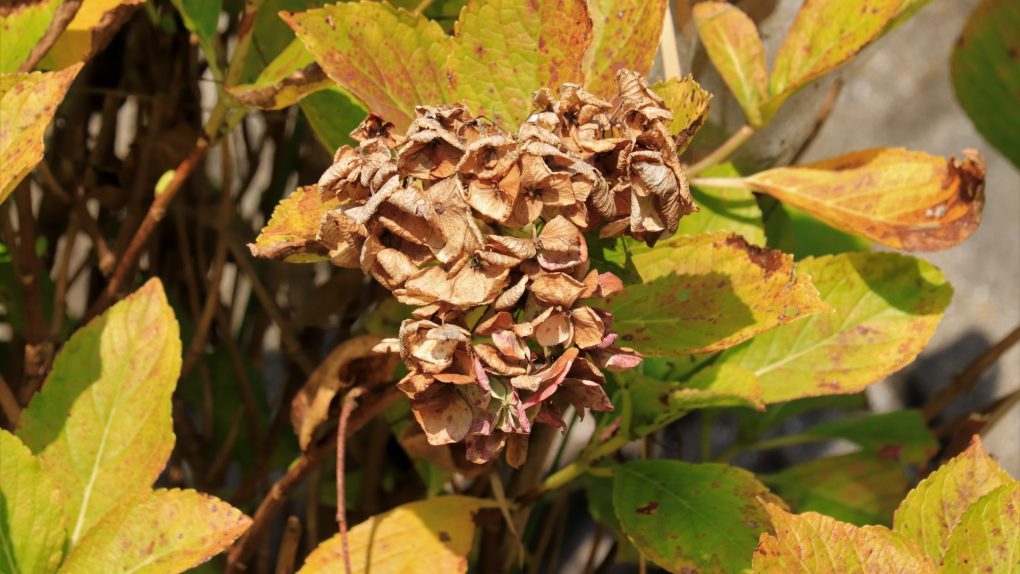
Watering Requirements
Hydrangea macrophylla requires consistent watering to maintain healthy growth and vibrant blooms. In this section, we will discuss the ideal watering conditions for this plant and the effects of overwatering and underwatering.
Ideal Watering Conditions
The ideal watering conditions for Hydrangea macrophylla are consistent moisture without waterlogged soil. Depending on the weather and soil conditions, the plant should be watered deeply 2-3 times per week. Therefore, it is important to water the plant from the base and avoid getting water on the leaves, as this can lead to fungal infections.
It is recommended to water in the morning, as the absence of midday sun leads to a low evaporation rate, preserving the soil’s moisture. Hydrangea macrophylla prefers soil that can hold more moisture, so check the soil moisture level before watering to prevent overwatering.
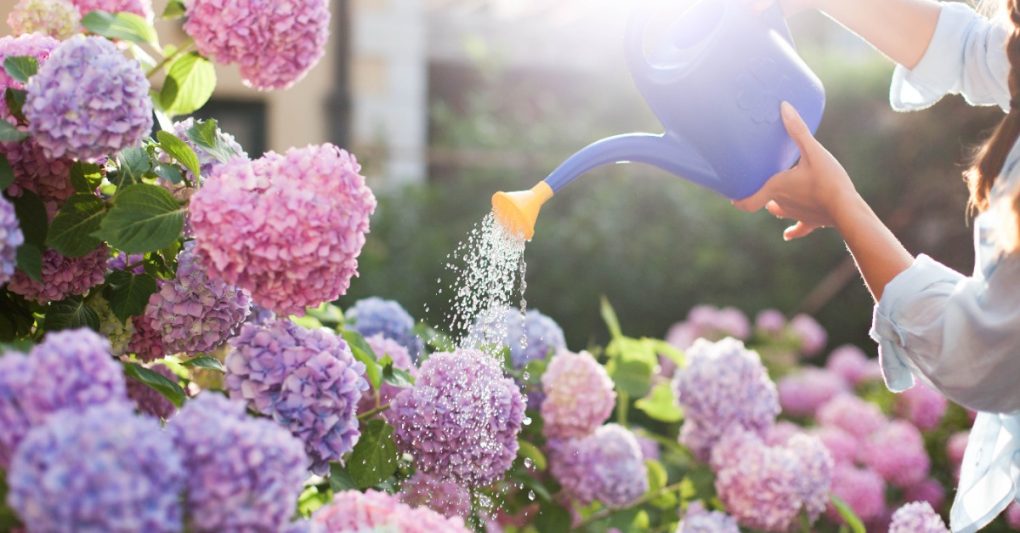
Effects of Overwatering
Overwatering can lead to root rot, which can be fatal to the plant. Signs of overwatering include yellowing leaves, wilting, and a general decline in the plant’s health. If you suspect your Hydrangea macrophylla is overwatered, reduce watering and improve drainage by adding organic matter to the soil or repotting in a well-draining potting mix.
Effects of Underwatering
A plant that is underwatered may wilt and turn brown, and may stop producing blooms. It is time to water the soil if it is dry. However, it is important to avoid letting the soil completely dry out, as this can also lead to stress and decline in the plant’s health.
Proper watering is crucial for the health and vitality of Hydrangea macrophylla. By following the ideal watering conditions and monitoring for signs of overwatering or underwatering, you can ensure your plant thrives for years.
Fertilizer Requirements
Hydrangea macrophylla is a stunning flowering shrub popular for its large, showy blooms. To keep your hydrangeas looking their best, providing them with the right amount of fertilizer is important. Here are things to keep in mind when fertilizing your hydrangeas:
Ideal Fertilizer Conditions
Hydrangeas typically thrive when fed an all-purpose, balanced fertilizer like a 10-10-10 N-P-K or 12-4-8 N-P-K. Consider a fertilizer with more phosphorus to increase the size and quantity of hydrangea blooms. Phosphorus is the middle number, so a fertilizer labeled 10-20-10 will do. It’s best to fertilize hydrangeas in the spring, just as new growth emerges. You can also fertilize again in the summer if you want to encourage more blooms.
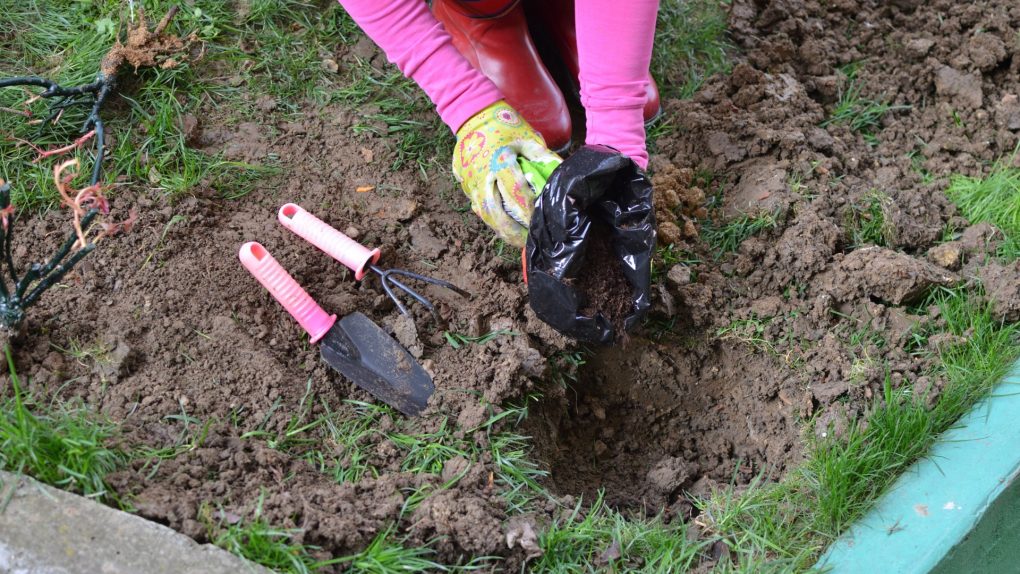
Effects of Over-fertilizing
While hydrangeas need fertilizer to grow and produce blooms, too much fertilizer can be harmful. Over-fertilizing can lead to excessive growth, weak stems, and fewer blooms. It can also cause the leaves to turn yellow and drop off. If you notice these symptoms, you may be over-fertilizing your hydrangeas. To remedy the situation, stop fertilizing and water your plants thoroughly to flush out any excess fertilizer from the soil.
Effects of Under-fertilizing
If you don’t fertilize your hydrangeas enough, they may not produce as many blooms as you’d like. Under-fertilizing can also lead to stunted growth and weak stems. If your hydrangeas aren’t growing or blooming as well as they should be, it may be time to fertilize. Just be sure to do just what is necessary!
Pruning Requirements
Hydrangea macrophylla requires minimal pruning, but it is important to prune them at the right time and in the right way to ensure optimal growth and flowering.
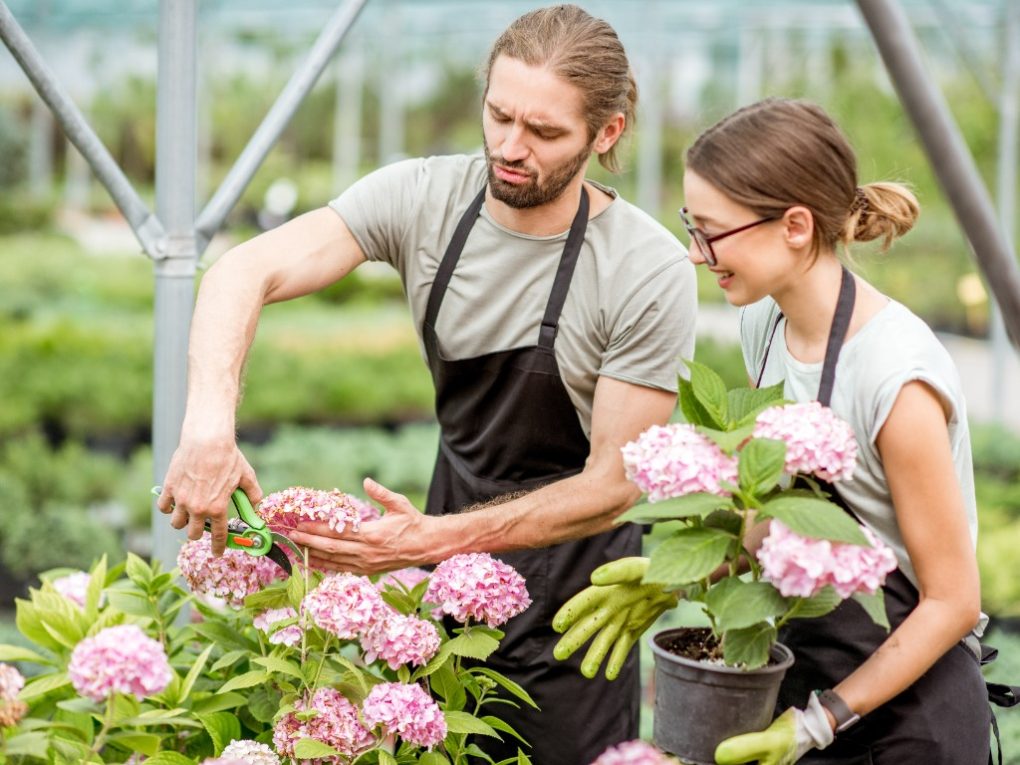
When to Prune
Hydrangea macrophylla should be pruned in late winter or early spring, before new growth appears. Pruning at this time will remove any dead or damaged wood and encourage new growth and blooms for the upcoming season.
How to Prune
When pruning Hydrangea macrophylla, it is important only to remove dead or damaged wood. Avoid pruning healthy wood, which can remove potential flower buds and reduce blooming for the upcoming season.
For established plants, prune out the oldest stems to encourage new growth and maintain a healthy plant structure. Remove any wood crossing or rubbing against other branches to prevent damage and encourage proper growth.
